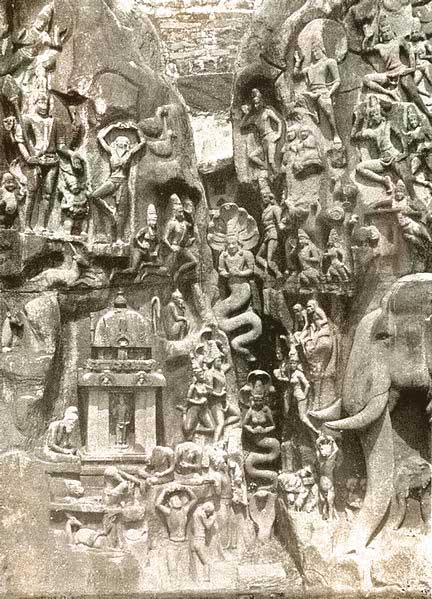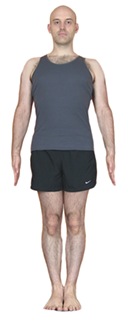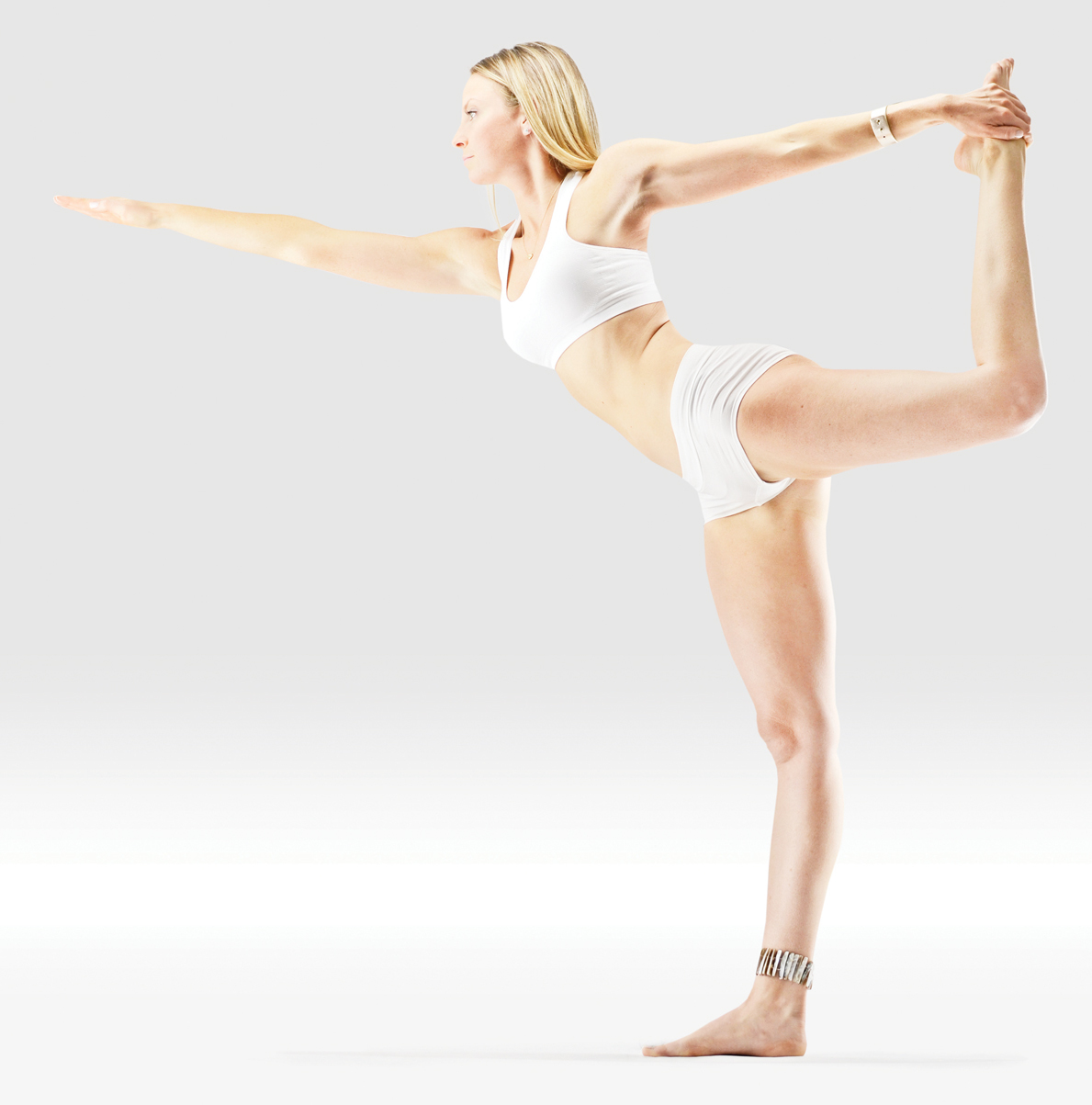|
Vrikshasana
Tree pose or Vrikshasana ( sa, वृक्षासन, translit=vṛkṣāsana) is a balancing asana. It is one of the very few standing poses in medieval hatha yoga, and remains popular in modern yoga as exercise. The pose has been called iconic of modern yoga; it is often featured in yoga magazines, and practised in public displays such as for the International Day of Yoga. Etymology and origins The name comes from the Sanskrit words () meaning 'tree', and () meaning 'posture'. A 7th-century stone carving in Mahabalipuram appears to contain a figure standing on one leg, perhaps indicating that a pose similar to vrikshasana was in use at that time. It is said that sadhus disciplined themselves by choosing to meditate in the pose. The pose is described in the 17th century '' Gheraṇḍa Saṃhitā'' 2.36. More recently it has been called iconic of modern yoga; it is often featured in yoga magazines, and practised in public displays such as for the International Day of Y ... [...More Info...] [...Related Items...] OR: [Wikipedia] [Google] [Baidu] |
Standing Asanas
The standing asanas are the yoga poses or asanas with one or both feet on the ground, and the body more or less upright. They are among the most distinctive features of modern yoga as exercise. Until the 20th century there were very few of these, the best example being Vrikshasana, Tree Pose. From the time of Krishnamacharya in Mysore, many standing poses have been created. Two major sources of these asanas have been identified: the exercise sequence Surya Namaskar (the salute to the sun); and the gymnastics widely practised in India at the time, based on the prevailing physical culture. The origin of standing asanas has been controversial since Mark Singleton argued in 2010 that some forms of modern yoga represent a radical reworking of hatha yoga, in particular by adding standing asanas and transitions ( vinyasas) between them, and by suppressing most non-postural aspects of yoga, rather than a smooth continuation of ancient traditions. These changes enabled yoga to be practise ... [...More Info...] [...Related Items...] OR: [Wikipedia] [Google] [Baidu] |
Vriksasana Yoga-Asana Nina-Mel
Tree pose or Vrikshasana ( sa, वृक्षासन, translit=vṛkṣāsana) is a balancing asana. It is one of the very few Standing asanas, standing poses in medieval hatha yoga, and remains popular in modern yoga as exercise. The pose has been called iconic of modern yoga; it is often featured in yoga magazines, and practised in public displays such as for the International Day of Yoga. Etymology and origins The name comes from the Sanskrit words () meaning 'tree', and () meaning 'posture'. A 7th-century stone carving in Mahabalipuram appears to contain a figure standing on one leg, perhaps indicating that a pose similar to vrikshasana was in use at that time. It is said that sadhus disciplined themselves by choosing to meditate in the pose. The pose is described in the 17th century ''Gheraṇḍa Saṃhitā'' 2.36. More recently it has been called iconic of modern yoga; it is often featured in yoga magazines, and practised in public displays such as for the Internat ... [...More Info...] [...Related Items...] OR: [Wikipedia] [Google] [Baidu] |
Tadasana
Tadasana ( sa , ताड़ासन, translit=Tāḍāsana), Mountain pose or Samasthiti ( sa, समस्थिति; IAST: ''samasthitiḥ'') is a standing asana in modern yoga as exercise; it is not described in medieval hatha yoga texts. It is the basis for several other standing asanas. Etymology and origins Tāḍāsana is from the Sanskrit words ताड ''tāḍa'', "mountain" and आसन ''āsana'' meaning "posture" or "seat". Samasthitiḥ is from सम ''sama'' meaning "equal", level", or "balanced"; and स्थिति ''sthiti'', "standing". The pose was unknown in hatha yoga until the 20th century ''Light on Yoga'', but it appears in the 1896 ''Vyayama Dipika'', a manual of gymnastics, as part of the "very old" sequence of ''danda'' (Sanskrit for "staff" or "stick") exercises. Norman Sjoman suggests that it was among the poses adopted into modern yoga as exercise in Mysore by Krishnamacharya to form the "primary foundation" for his vinyasas with flo ... [...More Info...] [...Related Items...] OR: [Wikipedia] [Google] [Baidu] |
List Of Asanas
An asana is a body posture, used in both medieval hatha yoga and modern yoga. The term is derived from the Sanskrit word for 'seat'. While many of the oldest mentioned asanas are indeed seated postures for meditation, asanas may be standing, seated, arm-balances, twists, inversions, forward bends, backbends, or reclining in prone or supine positions. The asanas have been given a variety of English names by competing schools of yoga. The traditional number of asanas is the symbolic 84, but different texts identify different selections, sometimes listing their names without describing them. Some names have been given to different asanas over the centuries, and some asanas have been known by a variety of names, making tracing and the assignment of dates difficult. For example, the name Muktasana is now given to a variant of Siddhasana with one foot in front of the other, but has also been used for Siddhasana and other cross-legged meditation poses. As another example, the headstand ... [...More Info...] [...Related Items...] OR: [Wikipedia] [Google] [Baidu] |
Asana
An asana is a body posture, originally and still a general term for a sitting meditation pose,Verse 46, chapter II, "Patanjali Yoga sutras" by Swami Prabhavananda, published by the Sri Ramakrishna Math p. 111 and later extended in hatha yoga and modern yoga as exercise, to any type of position, adding reclining, standing, inverted, twisting, and balancing poses. The ''Yoga Sutras of Patanjali'' define "asana" as " position thatis steady and comfortable". Patanjali mentions the ability to sit for extended periods as one of the eight limbs of his system. Patanjali ''Yoga sutras'', Book II:29, 46 Asanas are also called yoga poses or yoga postures in English. The 10th or 11th century '' Goraksha Sataka'' and the 15th century '' Hatha Yoga Pradipika'' identify 84 asanas; the 17th century ''Hatha Ratnavali'' provides a different list of 84 asanas, describing some of them. In the 20th century, Indian nationalism favoured physical culture in response to colonialism. In that enviro ... [...More Info...] [...Related Items...] OR: [Wikipedia] [Google] [Baidu] |
Hatha Yoga
Haṭha yoga is a branch of yoga which uses physical techniques to try to preserve and channel the vital force or energy. The Sanskrit word हठ ''haṭha'' literally means "force", alluding to a system of physical techniques. Some haṭha yoga style techniques can be traced back at least to the 1st-century CE, in texts such as the Hindu Sanskrit epics and Buddhism's Pali canon. The oldest dated text so far found to describe haṭha yoga, the 11th-century ''Amṛtasiddhi'', comes from a tantric Buddhist milieu. The oldest texts to use the terminology of ''hatha'' are also Vajrayana Buddhist. Hindu hatha yoga texts appear from the 11th century onwards. Some of the early haṭha yoga texts (11th-13th c.) describe methods to raise and conserve bindu (vital force, that is, semen, and in women ''rajas –'' menstrual fluid). This was seen as the physical essence of life that was constantly dripping down from the head and being lost. Two early Haṭha yoga techniques sought to e ... [...More Info...] [...Related Items...] OR: [Wikipedia] [Google] [Baidu] |
Yoga As Exercise
Yoga as exercise is a physical activity consisting mainly of postures, often connected by flowing sequences, sometimes accompanied by breathing exercises, and frequently ending with relaxation lying down or meditation. Yoga in this form has become familiar across the world, especially in America and Europe. It is derived from medieval Haṭha yoga, which made use of similar postures, but it is generally simply called "yoga". Academics have given yoga as exercise a variety of names, including modern postural yoga and transnational anglophone yoga. Posture is described in the ''Yoga Sutras'' II.29 as the third of the eight limbs, the ashtanga, of yoga. Sutra II.46 defines it as that which is ''steady and comfortable'', but no further elaboration or list of postures is given. Postures were not central in any of the older traditions of yoga; posture practice was revived in the 1920s by yoga gurus including Yogendra and Kuvalayananda, who emphasised its health benefits. The ... [...More Info...] [...Related Items...] OR: [Wikipedia] [Google] [Baidu] |
Natarajasana
Natarajasana ( sa, नटराजासन, translit=Naṭarājāsana), Lord of the Dance Pose or Dancer Pose is a standing, balancing, back-bending asana in modern yoga as exercise. It is derived from a pose in the classical Indian dance form Bharatnatyam, which is depicted in temple statues in the Nataraja Temple, Chidambaram. Nataraja, the "Dancing King", is in turn an aspect of the Hindu God Shiva, depicted in bronze statues from the Chola dynasty. The asana was most likely introduced into modern yoga by Krishnamacharya in the early 20th century, and taken up by his pupils, such as B. K. S. Iyengar, who made the pose his signature. Natarajasana is among the yoga poses often used in advertising, denoting desirable qualities such as flexibility and grace. Etymology and mythology The name comes from the Sanskrit epithet Nataraja, "Dancing King", one of the names given to the Hindu God Shiva in his form as the cosmic dancer, and आसन ''asana'' meaning "posture" or "se ... [...More Info...] [...Related Items...] OR: [Wikipedia] [Google] [Baidu] |
Postural Yoga In India
Yoga as exercise, Postural yoga began in India as a variant of traditional yoga, which was a mainly meditational practice; it has spread across the world and returned to the Indian subcontinent in different forms. The ancient ''Yoga Sutras of Patanjali'' mention yoga postures, asanas, only briefly, as meditation seats. Medieval Haṭha yoga made use of a small number of asanas alongside other techniques such as pranayama, shatkarmas, and mudras, but it was despised and almost extinct by the start of the 20th century. At that time, the revival of postural yoga was at first driven by Indian nationalism. Advocates such as Yogendra and Kuvalayananda made yoga acceptable in the 1920s, treating it The Path of Modern Yoga#Synopsis, as a medical subject. From the 1930s, the "father of modern yoga" Krishnamacharya developed a vigorous postural yoga, influenced by gymnastics, with transitions (vinyasas) that allowed one pose to flow into the next. Krishnamacharya's pupils K. Pattabhi Jois a ... [...More Info...] [...Related Items...] OR: [Wikipedia] [Google] [Baidu] |
DK (publisher)
Dorling Kindersley Limited (branded as DK) is a British multinational publishing company specialising in illustrated reference books for adults and children in 63 languages. It is part of Penguin Random House, a subsidiary of German media conglomerate Bertelsmann. Established in 1974, DK publishes a range of titles in genres including travel (including DK Eyewitness travel), history, geography, science, space, nature, sports, gardening, cookery and parenting. The worldwide co-CEOs of DK is Paul Kelly and Rebecca Smart. DK has offices in New York, Melbourne, London, Munich, New Delhi, Toronto, Madrid, Beijing, and Jiangmen. DK works with licensing partners such as Disney, LEGO, DC Comics, the Royal Horticultural Society, MasterChef, and the Smithsonian Institution. DK has commissioned Mary Berry, Monty Don, Robert Winston, Huw Richards, and Steve Mould for a range of books. History DK was founded in 1974 by Christopher Dorling and Peter Kindersley in London as a book p ... [...More Info...] [...Related Items...] OR: [Wikipedia] [Google] [Baidu] |
The Iyengar Way
''The'' () is a grammatical article in English, denoting persons or things that are already or about to be mentioned, under discussion, implied or otherwise presumed familiar to listeners, readers, or speakers. It is the definite article in English. ''The'' is the most frequently used word in the English language; studies and analyses of texts have found it to account for seven percent of all printed English-language words. It is derived from gendered articles in Old English which combined in Middle English and now has a single form used with nouns of any gender. The word can be used with both singular and plural nouns, and with a noun that starts with any letter. This is different from many other languages, which have different forms of the definite article for different genders or numbers. Pronunciation In most dialects, "the" is pronounced as (with the voiced dental fricative followed by a schwa) when followed by a consonant sound, and as (homophone of the archaic pron ... [...More Info...] [...Related Items...] OR: [Wikipedia] [Google] [Baidu] |
Schocken Books
Schocken Books is a book publishing imprint of Penguin Random House that specializes in Jewish literary works. Originally established in 1931 by Salman Schocken as Schocken Verlag in Berlin, the company later moved to Palestine and then the United States, and was acquired by Random House in 1987. History Schocken Books was founded in 1931 by Schocken Department Store owner Salman Schocken. Schocken has published the writings of Martin Buber, Franz Rosenzweig, Franz Kafka and S. Y. Agnon, among others. After being shut down by the Germans in 1939, Schocken, who immigrated from Germany to Palestine in 1934, founded the Hebrew-language ''Schocken Publishing House'' in Mandatory Palestine. Schocken moved to the United States in 1940. In 1945 he founded the English-language Schocken Books in New York City. In 1987 it was bought up by Random House. Schocken Books continues to publish Jewish literary works. Selected English publications Franz Kafka * ''The Trial'' * '' The Cas ... [...More Info...] [...Related Items...] OR: [Wikipedia] [Google] [Baidu] |








.png)